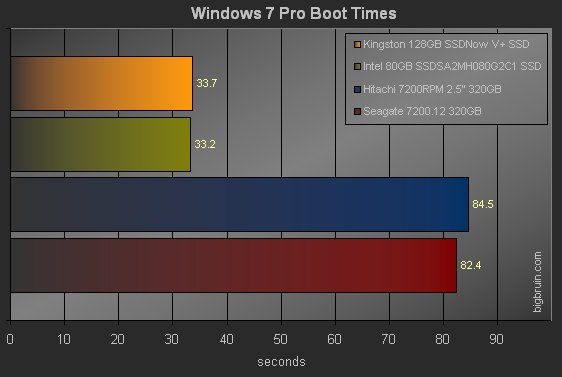Testing (continued):
Windows 7 Pro Boot Time
Finally, the drives were all used to boot into Windows 7 Professional, using the same image cloned to the drives using Acronis. Each drive was booted several times to ensure all drivers were configured. After several boots, three more boots were timed using a stopwatch. The time started when the power button was pressed, and stopped when the system was fully booted and ready to be used.

As the chart above shows, both solid state drives cut the boot time to about 1/3 of the standard hard drives. While the benchmarks presented the Intel as having a greater read speed than the Kingston drive, in this read world situation the difference in boot time was extremely minimal. So small that I doubt anybody would be able to tell the difference.



One thing to keep in mind, is that over time SSDs become "fragmented" and slow down. TRIM was implemented to resolve this, and keep the data cleaned up. In addition, TRIM coordinates writing data to each memory block to keep them wearing at around the same rate. Without TRIM, the SSD could fail early when the first blocks would become worn out.